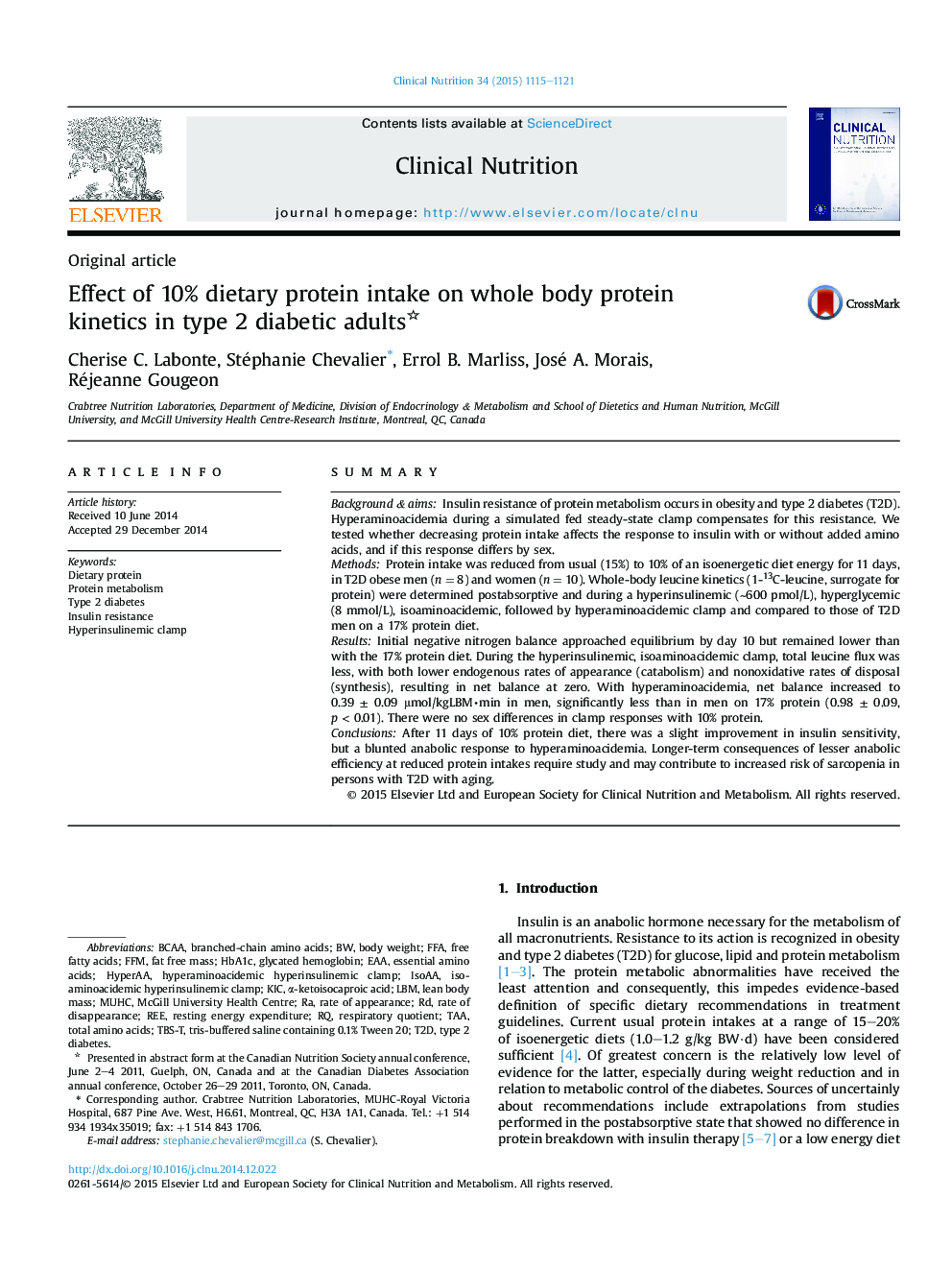| کد مقاله | کد نشریه | سال انتشار | مقاله انگلیسی | نسخه تمام متن |
|---|---|---|---|---|
| 2689324 | 1143199 | 2015 | 7 صفحه PDF | دانلود رایگان |
SummaryBackground & aimsInsulin resistance of protein metabolism occurs in obesity and type 2 diabetes (T2D). Hyperaminoacidemia during a simulated fed steady-state clamp compensates for this resistance. We tested whether decreasing protein intake affects the response to insulin with or without added amino acids, and if this response differs by sex.MethodsProtein intake was reduced from usual (15%) to 10% of an isoenergetic diet energy for 11 days, in T2D obese men (n = 8) and women (n = 10). Whole-body leucine kinetics (1-13C-leucine, surrogate for protein) were determined postabsorptive and during a hyperinsulinemic (∼600 pmol/L), hyperglycemic (8 mmol/L), isoaminoacidemic, followed by hyperaminoacidemic clamp and compared to those of T2D men on a 17% protein diet.ResultsInitial negative nitrogen balance approached equilibrium by day 10 but remained lower than with the 17% protein diet. During the hyperinsulinemic, isoaminoacidemic clamp, total leucine flux was less, with both lower endogenous rates of appearance (catabolism) and nonoxidative rates of disposal (synthesis), resulting in net balance at zero. With hyperaminoacidemia, net balance increased to 0.39 ± 0.09 μmol/kgLBM⋅min in men, significantly less than in men on 17% protein (0.98 ± 0.09, p < 0.01). There were no sex differences in clamp responses with 10% protein.ConclusionsAfter 11 days of 10% protein diet, there was a slight improvement in insulin sensitivity, but a blunted anabolic response to hyperaminoacidemia. Longer-term consequences of lesser anabolic efficiency at reduced protein intakes require study and may contribute to increased risk of sarcopenia in persons with T2D with aging.
Journal: Clinical Nutrition - Volume 34, Issue 6, December 2015, Pages 1115–1121
